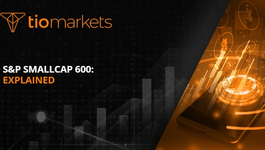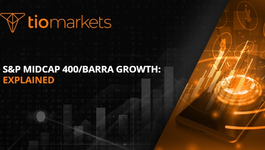Goods-in-Process: Explained
BY TIOmarkets
|July 27, 2024Goods-in-Process (GIP), also known as work-in-progress (WIP), is a vital term in the trading and manufacturing industries. It refers to the raw materials, labor, and overhead costs that are currently being used in the production process but are not yet completed. This article will delve into the intricacies of GIP, its implications in trading, and how it affects a company's financial health.
Understanding GIP is crucial for traders and investors alike as it provides insights into a company's operational efficiency, liquidity, and overall financial performance. It can serve as an indicator of the company's ability to manage its production process effectively and convert its inventory into finished goods promptly.
Concept of Goods-in-Process
The concept of Goods-in-Process is rooted in the manufacturing and production industries. It is a part of the inventory account on the balance sheet that represents goods that are in the middle of the production process. These goods have moved beyond the raw materials stage but are not yet finished products.
For example, in a car manufacturing company, a car that has its body and engine installed but is yet to have its interior and paintwork completed would be considered as goods-in-process. The value of these goods is calculated based on the costs incurred so far in the production process.
Components of Goods-in-Process
The value of Goods-in-Process is made up of three main components: raw materials, labor, and manufacturing overhead. Raw materials are the initial inputs in the production process. Labor refers to the work done by employees to transform raw materials into finished goods. Manufacturing overhead includes all other costs associated with the production process, such as utilities, depreciation, and factory rent.
It's important to note that the value of GIP can fluctuate significantly depending on the production stage. For instance, a product in the early stages of production may have a lower GIP value as it has consumed fewer resources compared to a product nearing completion.
Calculating Goods-in-Process
The calculation of Goods-in-Process is a crucial aspect of cost accounting. It involves adding the cost of raw materials, direct labor, and manufacturing overhead. The formula is as follows: GIP = Beginning WIP Inventory + Manufacturing Costs - Cost of Manufactured Goods.
The beginning WIP inventory refers to the value of goods that were in process at the start of the accounting period. Manufacturing costs include all costs incurred during the period, and the cost of manufactured goods is the value of goods that have been completed during the period.
Implications of Goods-in-Process in Trading
In the world of trading, Goods-in-Process holds significant implications. It is a key component of a company's inventory and is included in the calculation of the Cost of Goods Sold (COGS), which in turn affects the company's gross profit margin. Therefore, understanding GIP can provide traders with valuable insights into a company's profitability.
Moreover, a high GIP value can indicate a slow production process or inefficiencies in converting raw materials into finished goods. This could potentially signal financial difficulties, which traders need to be aware of when making investment decisions.
Goods-in-Process and Financial Analysis
Financial analysts often scrutinize the GIP account when evaluating a company's financial health. A steadily increasing GIP balance over time could indicate production bottlenecks or inefficiencies, which could negatively impact the company's profitability and cash flow.
On the other hand, a decreasing GIP balance could suggest that the company is becoming more efficient in its production process. However, if the GIP balance decreases too rapidly, it could mean that the company is not investing enough in its production, which could lead to a shortage of finished goods in the future.
Goods-in-Process and Market Trends
Market trends can also impact the value of Goods-in-Process. For instance, in a booming economy, companies may increase their production levels, leading to a higher GIP value. Conversely, in a recession, companies may cut back on production, resulting in a lower GIP value.
Traders can use this information to predict future market trends. For example, a sudden increase in GIP across multiple companies in a specific industry could indicate an upcoming surge in demand for that industry's products.
Managing Goods-in-Process
Effective management of Goods-in-Process is crucial for maintaining operational efficiency and profitability. Companies need to strike a balance between having enough GIP to meet demand and not having so much that it leads to excessive storage costs or obsolescence.
Inventory management techniques, such as Just-in-Time (JIT) and Economic Order Quantity (EOQ), can help companies optimize their GIP levels. These methods aim to minimize inventory costs while ensuring that production can continue smoothly without interruptions due to lack of materials or components.
Impact of Technology on Goods-in-Process
Advancements in technology have greatly impacted the management of Goods-in-Process. Modern inventory management systems can track the status of goods in real-time, providing companies with accurate and timely information to make informed decisions.
Furthermore, technologies such as automation and robotics can speed up the production process, reducing the time that goods spend in the GIP stage. This can lead to lower GIP values and improved operational efficiency.
Challenges in Managing Goods-in-Process
Despite the benefits of effective GIP management, companies face several challenges in this area. These include accurately tracking and valuing GIP, dealing with production uncertainties, and managing the risk of obsolescence.
These challenges require careful planning and strategic decision-making. Companies need to invest in robust inventory management systems and adopt best practices to ensure that their GIP is managed effectively.
Conclusion
In conclusion, Goods-in-Process is a critical concept in trading and manufacturing. It provides valuable insights into a company's operational efficiency and financial health, making it an important consideration for traders and investors.
While managing GIP can be challenging, effective inventory management strategies and the use of modern technology can help companies optimize their GIP levels, improve their profitability, and provide a better return on investment for their shareholders.
Start Trading with TIOmarkets
Understanding Goods-in-Process is just the beginning. Take your trading to the next level with TIOmarkets, a top rated forex broker offering over 300 instruments across 5 markets. Join our growing community of 170,000+ traders in over 170 countries and benefit from low fees, comprehensive educational resources, and step-by-step guides. Ready to put your knowledge into action? Create a Trading Account today and start your journey towards successful trading.

Risk disclaimer: CFDs are complex instruments and come with a high risk of losing money rapidly due to leverage. You should consider whether you understand how CFDs work and whether you can afford to take the high risk of losing your money. Never deposit more than you are prepared to lose. Professional client’s losses can exceed their deposit. Please see our risk warning policy and seek independent professional advice if you do not fully understand. This information is not directed or intended for distribution to or use by residents of certain countries/jurisdictions including, but not limited to, USA & OFAC. The Company holds the right to alter the aforementioned list of countries at its own discretion.
Join us on social media

Behind every blog post lies the combined experience of the people working at TIOmarkets. We are a team of dedicated industry professionals and financial markets enthusiasts committed to providing you with trading education and financial markets commentary. Our goal is to help empower you with the knowledge you need to trade in the markets effectively.





